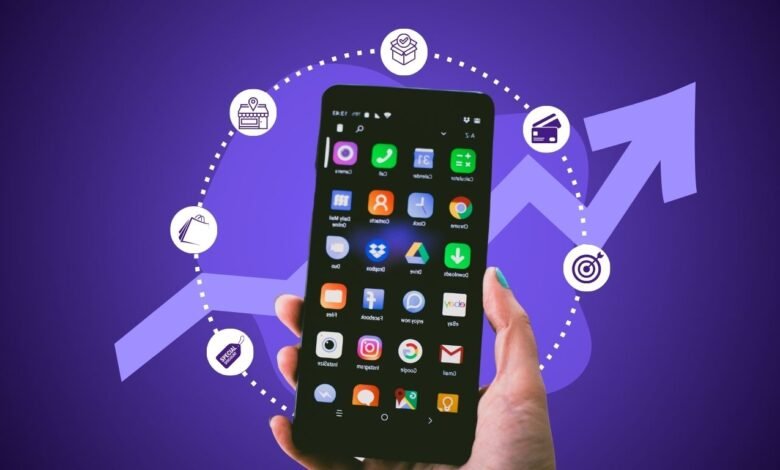How to Boost LTV for Your Mobile App and Increase Revenue

For mobile app developers, increasing Lifetime Value (LTV) is a critical factor in achieving sustainable growth and maximizing profitability. LTV mobile apps is a term that encapsulates the importance of measuring and optimizing the total revenue generated by a single user over their entire relationship with your app. A strong LTV not only reflects the loyalty and satisfaction of your users but also enables you to scale effectively and justify higher acquisition costs.
By focusing on strategies that enhance user retention, engagement, and monetization, app developers can create experiences that keep users coming back and spending more. In this blog, we’ll dive into actionable steps to boost LTV for your mobile app and ensure long-term success in a competitive market.
Understanding the Importance of LTV
Lifetime Value (LTV) is a cornerstone metric for mobile app success because it directly impacts the profitability and sustainability of your app. A high LTV allows you to:
- Justify Higher User Acquisition Costs (CAC): If the LTV of your users significantly outweighs the cost of acquiring them, your app can scale profitably.
- Prioritize Retention: Loyal users cost less to maintain than acquiring new ones, leading to a healthier bottom line.
- Enhance Revenue Streams: Users with a high LTV are more likely to spend on in-app purchases, subscriptions, or premium features.
Understanding and optimizing LTV is essential for driving long-term success in a competitive app marketplace.
1. Improve Onboarding to Drive Early Engagement
First impressions matter. A smooth and engaging onboarding process can significantly influence whether new users stay with your app or abandon it after the first session. If users understand the value of your app quickly, they’re more likely to engage consistently, boosting LTV.
- Keep It Simple: Highlight core features without overwhelming users.
- Personalize the Experience: Tailor onboarding steps based on user demographics or preferences.
- Show Immediate Value: Demonstrate how your app solves a problem or enhances their life within the first few sessions.
Example: Duolingo’s onboarding process sets clear language-learning goals, introduces gamified elements, and offers personalized lessons to keep users motivated.
2. Focus on User Retention
Retention is the backbone of increasing LTV. Retaining users over the long term ensures recurring engagement and revenue. Implement retention-focused strategies such as:
- Push Notifications: Send timely and relevant reminders to bring users back to the app.
- Email Drip Campaigns: Use email to re-engage users who haven’t opened your app in a while.
- Exclusive Content: Provide access to premium content or features for loyal users.
Tip: Analyze user behavior to identify where churn occurs and optimize those touchpoints to reduce drop-offs.
3. Monetize Effectively with In-App Purchases and Subscriptions
Offering valuable in-app purchases (IAPs) or subscription plans can significantly enhance revenue. To optimize monetization:
- Segment Your Users: Identify user groups willing to spend and create tailored offers.
- Highlight Value: Clearly communicate the benefits of premium features or subscriptions.
- Offer Free Trials: Allow users to experience premium features risk-free, increasing the likelihood of conversion.
Example: Spotify’s free trial for its premium service hooks users by showcasing ad-free listening and offline downloads, leading many to convert to paid subscriptions.
4. Use Personalization to Create Tailored Experiences
Personalized experiences boost engagement and satisfaction, leading to higher LTV. Utilize user data to:
- Recommend Content or Features: Suggest features, content, or products based on user behavior.
- Customize Notifications: Send personalized messages that resonate with individual preferences.
- Adapt the User Interface: Adjust the app’s layout or recommendations based on user activity.
Example: Netflix’s personalized recommendations and user interface keep users engaged, leading to longer subscription durations.
5. Leverage Gamification for Engagement
Gamification taps into users’ psychological need for achievement and competition, encouraging them to engage more frequently with your app. Key gamification strategies include:
- Points and Badges: Reward users for completing actions, such as reaching milestones or completing tasks.
- Leaderboards: Encourage friendly competition among users.
- Daily Challenges: Motivate users to return regularly by offering rewards for consistent engagement.
Example: Fitness apps like Strava use gamification by offering users achievements for completing workouts and challenging friends, fostering long-term engagement.
6. Build Community and Social Features
Incorporating social elements fosters a sense of belonging and encourages users to stay connected with your app.
- Enable Sharing: Allow users to share their achievements or app-generated content on social media.
- Create Forums or Groups: Build in-app communities where users can connect, discuss, and share tips.
- Add Referral Programs: Encourage users to invite friends by offering incentives like discounts or in-app rewards.
Example: Peloton’s community features, such as live leaderboards and social media sharing, create a sense of camaraderie among users, boosting retention and LTV.
7. Offer Incentives for Long-Term Engagement
Incentives encourage users to keep using your app over time, increasing LTV. Some effective incentives include:
- Loyalty Programs: Reward users with points or discounts for frequent engagement.
- Milestone Rewards: Celebrate user milestones, such as anniversaries or usage streaks, with exclusive offers.
- Limited-Time Offers: Create urgency by offering time-sensitive discounts or bonuses.
Example: Starbucks’ app-based rewards program incentivizes repeat purchases by allowing users to earn stars for free drinks and exclusive perks.
8. Optimize the User Experience (UX)
A seamless and enjoyable user experience ensures that users continue to engage with your app. Poor design or slow performance can lead to churn, negatively impacting LTV.
- Ensure Fast Load Times: Optimize your app for speed to reduce frustration.
- Minimize Bugs and Crashes: Regularly test and update your app to fix technical issues.
- Simplify Navigation: Make it easy for users to find and access features.
Example: Instagram’s clean design and intuitive navigation keep users returning, increasing their time spent on the app.
9. Implement Data-Driven Insights
Use analytics to track user behavior, identify trends, and optimize your app for better engagement and monetization. Key metrics to monitor include:
- Retention Rate: Percentage of users who continue using the app over a specific time period.
- Churn Rate: Rate at which users stop engaging with your app.
- Average Revenue Per User (ARPU): Measure of the revenue generated per user over a given period.
By analyzing these metrics, you can refine your strategies to maximize user lifetime value.
10. Retarget Users with Marketing Campaigns
Retargeting campaigns help re-engage users who have dropped off or haven’t used your app recently. Strategies include:
- Email Campaigns: Send personalized emails reminding users of app benefits or offering discounts.
- Social Media Ads: Target users with ads showcasing new features or promotions.
- Push Notifications: Use compelling language to remind users of unfinished actions, like abandoned carts.
Example: Shopping apps like Amazon use retargeting to remind users about items left in their cart, often paired with limited-time discounts.
11. Test and Iterate
Continuous testing and iteration are essential to improving LTV. Experiment with new features, pricing models, or engagement strategies to find what resonates best with your audience.
- A/B Testing: Compare different versions of a feature or campaign to determine which performs better.
- User Feedback: Gather feedback through surveys or in-app forms to identify areas for improvement.
- Analyze Trends: Stay updated on industry trends to adopt new practices that align with user expectations.
Conclusion
Boosting Lifetime Value (LTV) for your mobile app is a multifaceted process that requires a focus on retention, engagement, and monetization. By optimizing onboarding, personalizing experiences, leveraging gamification, and using data-driven strategies, you can ensure that users stay loyal and continue to contribute to your app’s revenue.
A high LTV not only drives profitability but also enables sustainable growth by allowing you to invest confidently in user acquisition and innovation. By prioritizing user satisfaction and long-term engagement, your app can thrive in an increasingly competitive market.





